Search Images
Browse Content (p. 1228)
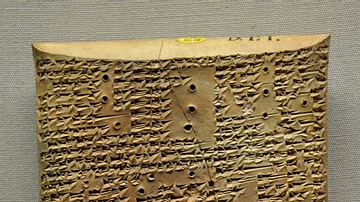
Image
Advice to a Mesopotamian Prince
The cuneiform inscription on this clay tablet claims various exemptions for the cities of Babylon, Nippur, and Sippar and warns rulers against disregarding them. This is a copy which was made about 700-650 BCE of an earlier composition. From...
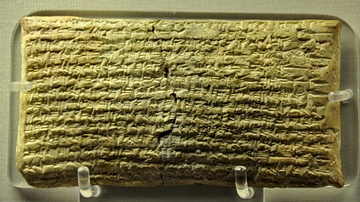
Image
Request to Shamash
This is an inquiry addressed to the sun-god Shamash. It asks whether the Assyrian army, commanded by Nabu-shar-utsur, will successfully recover the fortress captures by the Manneans, a people who lived in western Iran. Neo-Assyrian Period...
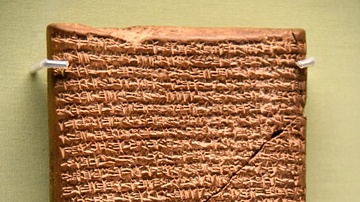
Image
The Babylonian Chronicle and the Fall of Nineveh
This clay tablet is one of a series that chronicles important events between 747-282 BCE. Here, the text narrates the events between 615-609 BCE, and includes an account of the destruction of the Assyrian capital, Nineveh. This is a copy...
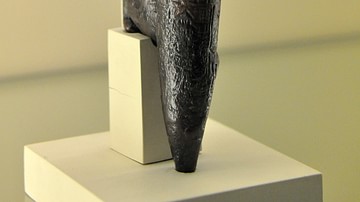
Image
Foundation Figurine of a Kneeling God
Bronze foundation figurine, depicting a kneeling god holding an inscribed peg. From Southern Mesopotamia (modern-day Iraq), 2144-2124 BCE.
Pergamon Museum, Berlin.
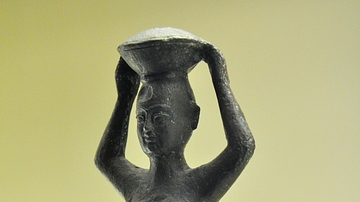
Image
Foundation Figurine of a Basket Bearer
Bronze figurine of a basket bearer with cuneiform inscriptions. Circa 1770 BCE. From Mesopotamia, modern-day Iraq. (Pergamon Museum, Berlin, Germany)
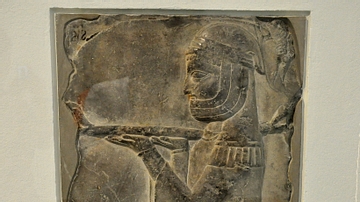
Image
Gift-Bearer from Persepolis
This limestone wall relief shows a man holding a gift for the king. The man wears the typical Persian garment. From Persepolis, the Palace Terrace of Darius I (521-486 BCE) or Xerxes I (485-465 BCE), modern-day Iran. (Pergamon Museum, Berlin...
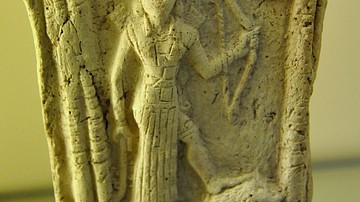
Image
Ishtar Standing on a Lion
This terracotta plaque depicts the goddess Ishtar standing on a lion. From Mesopotamia, modern-day Iraq. Old-Babylonian Period, 19th to 17th century BCE.
Pergamon Museum, Berlin.
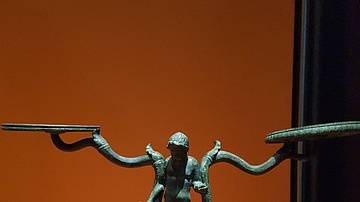
Image
A Candelabrum from Pompeii
A bronze candelabrum from Pompeii. 1st century CE. Soprintendenza Archeologica di Pompei, (National Maritime Museum, Sydney Australia)
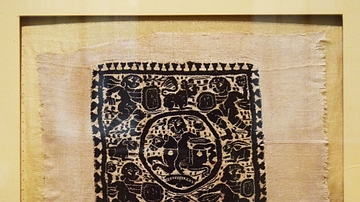
Image
Coptic Textile of St. Joseph
This Coptic linen textile spun from wool depicts scenes from the life of St. Joseph, including images of a horseman, four warriors, animals, a grapevine, a bird, and a running warrior holding a spear. Egypt, c. 300-700 CE. (Pushkin Museum...
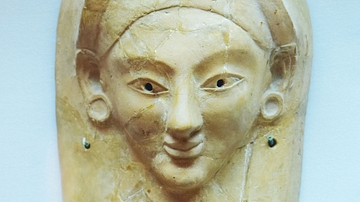
Image
Protome of a Hellenic Deity
A protome of an ancient Hellenic deity created from clay. Samos, Greece, c. 525 BCE. (Pushkin Museum, Moscow)